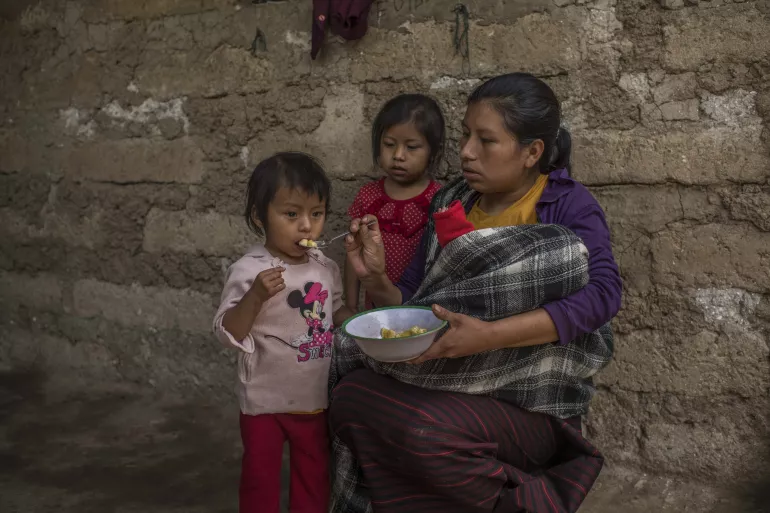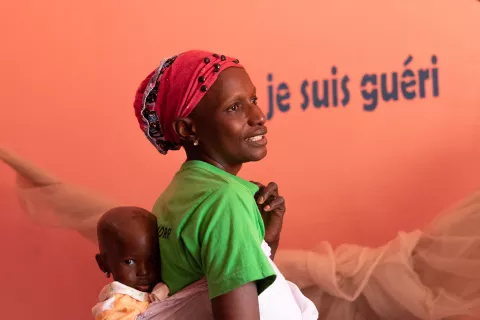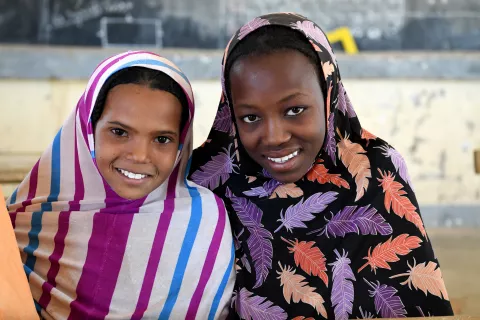COVID-19 ‘biggest global crisis for children in our 75-year history’ – UNICEF
On its 75th anniversary, UNICEF warns that COVID-19 is rolling back virtually every measure of progress for children, including a staggering 100 million more children plunged into poverty

- Available in:
- 中文
- English
NEW YORK, 9 December 2021 – COVID-19 has affected children at an unprecedented scale, making it the worst crisis for children UNICEF has seen in its 75-year history, the United Nations Children’s agency said in a report released today.
The report Preventing a lost decade: Urgent action to reverse the devastating impact of COVID-19 on children and young people highlights the various ways in which COVID-19 is challenging decades of progress on key childhood challenges such as poverty, health, access to education, nutrition, child protection and mental well-being. It warns that, almost two years into the pandemic, the widespread impact of COVID-19 continues to deepen, increasing poverty, entrenching inequality and threatening the rights of children at previously unseen levels.
“Throughout our history, UNICEF has helped to shape healthier and safer environments for children across the globe, with great results for millions,” said UNICEF Executive Director Henrietta Fore. “These gains are now at risk. The COVID-19 pandemic has been the biggest threat to progress for children in our 75-year history. While the number of children who are hungry, out of school, abused, living in poverty or forced into marriage is going up, the number of children with access to health care, vaccines, sufficient food and essential services is going down. In a year in which we should be looking forward, we are going backward.”
The report says a staggering 100 million additional children are estimated to now be living in multidimensional poverty because of the pandemic, a 10 per cent increase since 2019. This corresponds to approximately 1.8 children every second since mid-March, 2020. Further, the report warns of a long path toward regaining lost ground – even in a best-case scenario, it will take seven to eight years to recover and return to pre-COVID child poverty levels.
Citing further evidence of backsliding, the report says that around 60 million more children are now in monetary poor households compared to prior to the pandemic. In addition, in 2020, over 23 million children missed out on essential vaccines – an increase of nearly 4 million from 2019, and the highest number in 11 years.
Even before the pandemic, around 1 billion children worldwide suffered at least one severe deprivation, without access to education, health, housing, nutrition, sanitation, or water. This number is now rising as the unequal recovery furthers growing divides between wealthy and poor children, with the most marginalized and vulnerable hurt the most. The report notes:
- At its peak, more than 1.6 billion students were out of school due to nationwide shutdowns. Schools were closed worldwide for almost 80 per cent of the in-person instruction in the first year of the crisis.
- Mental health conditions affect more than 13 per cent of adolescents aged 10–19 worldwide. By October 2020, the pandemic had disrupted or halted critical mental health services in 93 per cent of countries worldwide
- Up to 10 million additional child marriages can occur before the end of the decade as a result of the COVID-19 pandemic.
- The number of children in child labour has risen to 160 million worldwide – an increase of 8.4 million children in the last four years. An additional 9 million children are at risk of being pushed into child labour by the end of 2022 as a result of the increase in poverty triggered by the pandemic.
- At the peak of the pandemic, 1.8 billion children lived in the 104 countries where violence prevention and response services were seriously disrupted.
- 50 million children suffer from wasting, the most life-threatening form of malnutrition, and this figure could increase by 9 million by 2022 due to the pandemic’s impact on children’s diets, nutrition services and feeding practices.
Beyond the pandemic, the report warns of other threats to children that pose extreme threats to their rights. Globally, 426 million children – nearly 1 in 5 – live in conflict zones that are becoming more intense and taking heavier toll on civilians, disproportionately affecting children. Women and girls are at the highest risk of conflict-related sexual violence. Eighty per cent of all humanitarian needs are driven by conflict. Likewise, approximately 1 billion children – nearly half of the world’s children – live in countries that are at an ‘extremely high-risk’ from the impacts of climate change.
To respond, recover and reimagine the future for every child, UNICEF continues to call for:
- Investing in social protection, human capital and spending for an inclusive and resilient recovery;
- Ending the pandemic and reversing the alarming rollback in child health and nutrition – including through leveraging UNICEF’s vital role in COVID-19 vaccine distribution;
- Building back stronger by ensuring quality education, protection and good mental health for every child;
- Building resilience to better prevent, respond to, and protect children from crises – including new approaches to end famines, protect children from climate change, and reimagine disaster spending.
“In an era of a global pandemic, growing conflicts, and worsening climate change, never has a child-first approach been more critical than today,” said Fore. “We are at a crossroads. As we work with governments, donors and other organizations to begin charting our collective path for the next 75 years, we must keep children first in line for investment and last in line for cuts. The promise of our future is set in the priorities we make in our present.”
###
Notes to editors:
Download the report here
Multimedia content available to download here
Media contacts
About UNICEF
UNICEF works in some of the world's toughest places, to reach the world's most disadvantaged children. Across 190 countries and territories, we work for every child, everywhere, to build a better world for everyone.
| Visit UNICEF Global website: www.unicef.org Visit UNICEF China website: www.unicef.cn Follow us on Sina Weibo: http://weibo.com/unicefchina Wechat: unicefchina |





